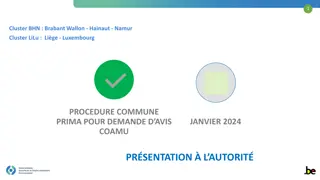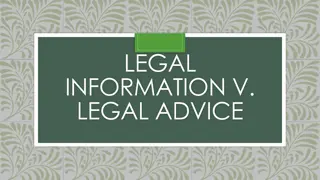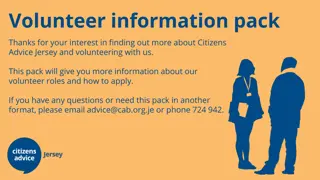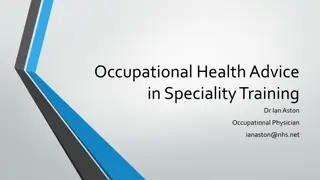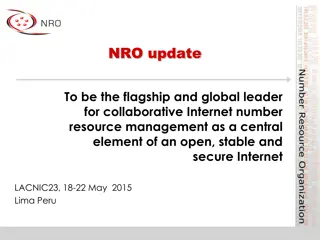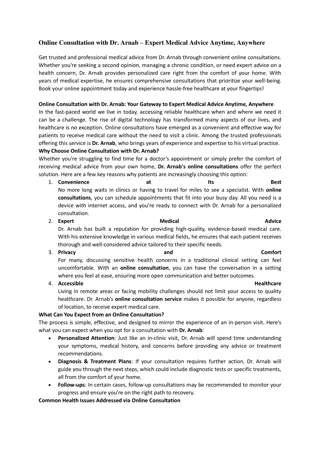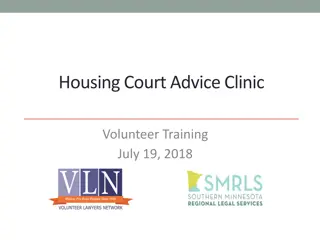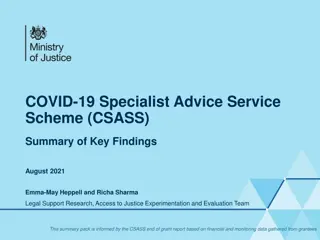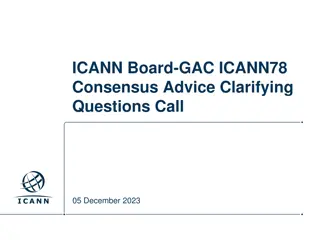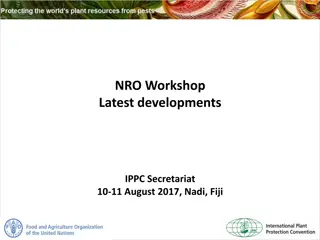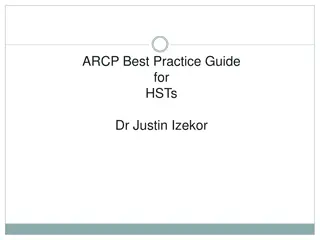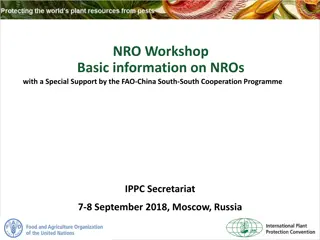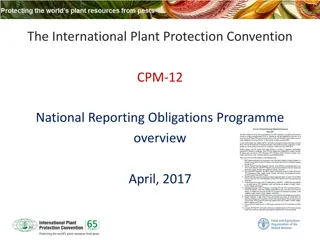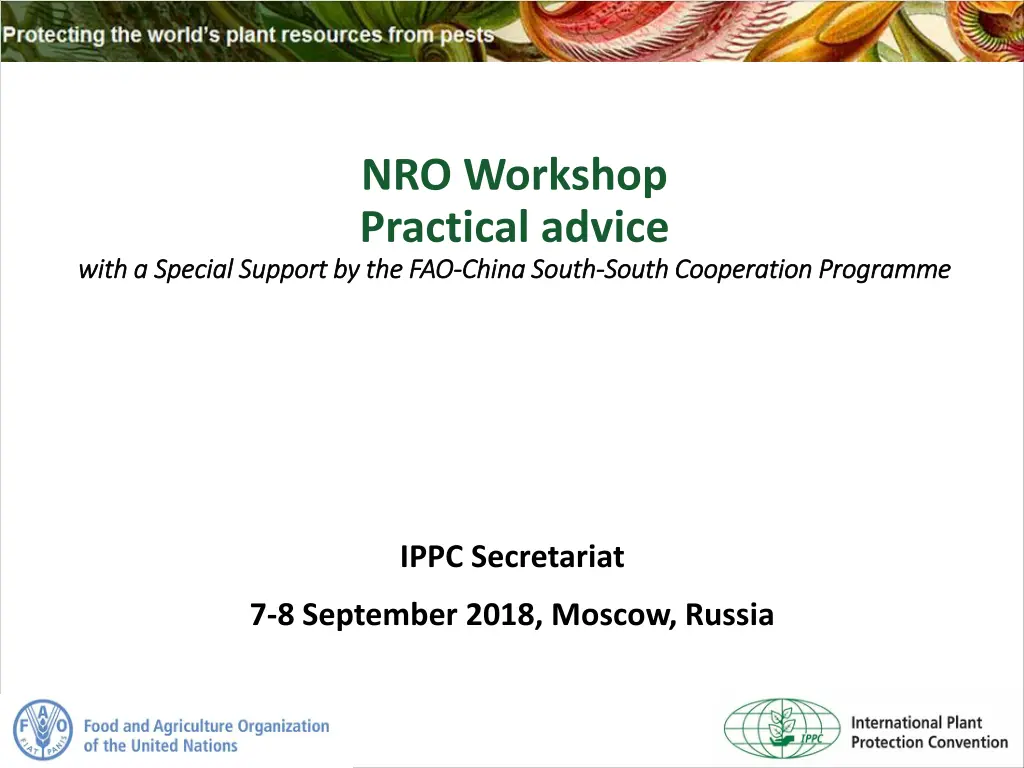
Managing Reports on IPP: Best Practices for Updates
Learn the essential steps for managing reports on the IPP platform efficiently. Discover how to prioritize updating existing reports, guidelines for deleting outdated information, publication date significance, and replacing files/attachments. Follow these guidelines to maintain accurate and relevant information on the platform.
Download Presentation

Please find below an Image/Link to download the presentation.
The content on the website is provided AS IS for your information and personal use only. It may not be sold, licensed, or shared on other websites without obtaining consent from the author. If you encounter any issues during the download, it is possible that the publisher has removed the file from their server.
You are allowed to download the files provided on this website for personal or commercial use, subject to the condition that they are used lawfully. All files are the property of their respective owners.
The content on the website is provided AS IS for your information and personal use only. It may not be sold, licensed, or shared on other websites without obtaining consent from the author.
E N D
Presentation Transcript
NRO Workshop Practical advice China South- -South Cooperation Programme South Cooperation Programme with a Special Support by the FAO with a Special Support by the FAO- -China South IPPC Secretariat 7-8 September 2018, Moscow, Russia
New report: what to do first? Check if a similar report already exists on the IPP. It is better to update the existing report than add a new one! Nonetheless if you decide to add a new report, make sure reports are clearly labelled (in title or description). It should be clearly indicated which is the most recent. Note that: All changes that you save are tracked = all previous versions of reports (revisions) are on IPP
Deleting old reports (Part I) General rule based on FAO Legal Advice: a report/information uploaded by a country on the IPP = official information transmitted to other countries and the Secretariat a delete option should not be used as a general rule Obsolete reports should be updated with fresh ones or if they are not valid information should be given that it is no longer valid. The presumption is that the information was valid at the time of the upload and as such can be retained as Revision/s that can be considered as archiving. If a report is deleted, all data disappear and cannot be accessed any longer which might be needed in case of a trade dispute or disagreement. This is why the deletion can only be done by the Secretariat, however only in case of an error/mistake/duplication of reports. If you consider this is your case, please contact the Secretariat (ippc@fao.org).
Deleting old reports (Part II) If this is not your case but you would like to still delete the report as the information is no longer valid: Log in to the IPP, go to: Edit Country Information . Go to the report and click on EDIT on the right When the form opens: delete all the data appearing in all lines/windows including removal of all files (attachments) Rename the report (change title and/or description) to e.g.: Report/measures no longer valid or N/A Save the data by clicking on UPDATE REPORT
Publication Date (of a report) Means the date when it was uploaded on the IPP Done automatically by the system Cannot be changed Used for statistics Past: meant a real date of Publication of e.g. the legislation and a user could type it Now: mention it in e.g. Description if needed
How to replace files/attachments Log in to the IPP, go to: Edit Country Information . Go to the report and click on EDIT on the right When the form opens: scroll down to see Files . To replace the previously uploaded file (shown after Currently: ), click on: Choose file below it and then select a document stored on your computer (remember to click on Open in a dialogue box which should appear on your screen). Save the data by clicking on UPDATE REPORT
Contact details of Contact Points: Who can change them? Contact Points can change all their contact details (email, address, organization s name, etc.) apart from their name and title Contact Points need to log in to the IPP to do it (and click on Update Profile next to coordinates) IPP editors cannot do it on their behalf (editors can edit their own contact details) To change the name or title of Contact Point you need to contact the Secretariat (ippc@fao.org) If a change of the name means a new person was appointed as Contact Point follow procedure on a new Contact Point nomination (via official nomination form or official letter)
NPPO Description versus Organization of NPPO Each contracting party shall submit a description of its official national plant protection organization and of changes in such organization to the Secretary. A contracting party shall provide a description of its organizational arrangements for plant protection to another contracting party, upon request. NPPO Description: Public General structure of an NPPO In the form of an organogram NPPO Organization: Bilateral on request Should contain a description of functions and responsibilities in relation to plant protection (Article IV.2 & 3: surveillance, inspections, issuance of certificates, etc.). Both can be combined in one report and made public on the IPP as a single report, e.g. in the form of organogram indicating who is responsible for which area and what are the connections between different parts of the NPPO.
New phytosanitary certificates: report or not? There is no obligation to report new models/templates of phytosanitary certification as such However, as it is important to inform other countries about the change which is usually done through updating national legislation, you can report it on the IPP under Phytosanitary legislation Remember to check the box under Notify and select countries when uploading this report on the IPP
Pest report: status fields Status = the status of this report in the system in regard to data entry. A possibility to save the report as a draft. Select from the drop down menu either Published or Draft . If you choose draft it will not be visible to other users unless you change it to Published . If you do not need this option, leave Published as selected by default. Report Status = the status of this report in regard to the pest and measures taken and which are communicated in this report. A possibility to select from the drop down menu Final or Preliminary or N/A (non applicable). If you describe a new pest outbreak you might select Preliminary and come back to update the report later once more information about the outbreak is known and measures taken are changed or completed. If you do not need this option, leave Final as selected by default. Pest Status = a status of the pest you are reporting. You estimate it according to the International Standard for Phytosanitary Measure No 8: Determination of pest status in an area. A possibility to select an appropriate status of the pest from the drop down menu.
Pest report: report a pest or not? The contracting parties shall cooperate with one another to the fullest practicable extent in achieving the aims of this Convention, and shall in particular ( ) cooperate in the exchange of information on plant pests, particularly the reporting of the occurrence, outbreak or spread of pests that may be of immediate or potential danger (...) When in doubt as to the qualification of a pest as a pest of immediate or potential danger and therefore its reporting, the reporting of any pest is desirable. Other countries may see a pest as of immediate of potential danger even if you don t.
Emergency action: what is it? ISPM 5 Glossary of Phytosanitary Terms: emergency action: a prompt phytosanitary action undertaken in a new or unexpected phytosanitary situation phytosanitary action: an official operation, such as inspection, testing, surveillance or treatment, undertaken to implement phytosanitary regulations or procedures . Information on emergency actions are often included in pest reports. ISPM 13 Guidelines for the notification of non-compliance and emergency action contains partial (connected only to non-compliance of imported consignments) guidelines for the notification of emergency actions
Notifying other countries When entering a new report: check the box (by clicking on it) under Notify select from the lists a chosen country and/or organizations (under Notification to Countries, RPPOs, IOs, Liaisons or Secretariat Country you want to notify ) If you forgot to do it while uploading a new report, you can still do it later: log in to the IPP, go to the report and click on Edit check the box (by clicking on it) under Notify select from the lists a chosen country and/or organizations (under Notification to Countries, RPPOs, IOs, Liaisons or Secretariat Country you want to notify ) click on Update report . That should send out the notifications to your chosen countries.
Contacts IPPC Secretariat Food and Agriculture Organization of the United Nations Viale delle Terme di Caracalla, 00153 Rome, Italy Tel.: +39-0657054812 Email: IPPC@fao.org Dorota Buzon, NRO Programme Officer: dorota.buzon@fao.org Paola Sentinelli, IPPC Knowledge Manager: paola.sentinelli@fao.org Websites: www.fao.org www.ippc.int

